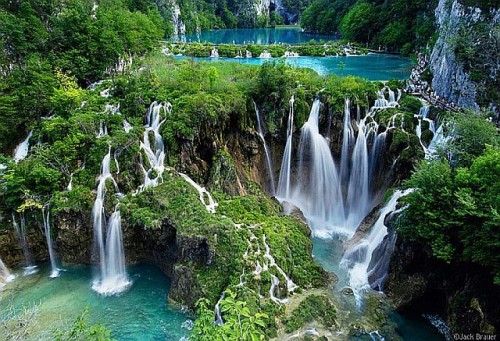 UNESCO, with the help of 21 member World Heritage Committee and advisory bodies such as International Council on Monuments and Sites (ICOMOS) and International Union for Conservation of Nature (IUCN), within the framework of its Operational Guidelines, decides about the cultural and natural sites to be included on the World Heritage list. Such cultural and natural sites must display the necessary Outstanding Universal Value (OUV), fulfill one or more out of 10 prescribed criteria (as given below), maintain the condition of authenticity and integrity and should be in a good state of conservation.
UNESCO, with the help of 21 member World Heritage Committee and advisory bodies such as International Council on Monuments and Sites (ICOMOS) and International Union for Conservation of Nature (IUCN), within the framework of its Operational Guidelines, decides about the cultural and natural sites to be included on the World Heritage list. Such cultural and natural sites must display the necessary Outstanding Universal Value (OUV), fulfill one or more out of 10 prescribed criteria (as given below), maintain the condition of authenticity and integrity and should be in a good state of conservation.
At times, concerns are raised by the World Heritage Centre during inscription process those relate to the state of conservation or its management (including that of its buffer). State party addresses such concerns by giving necessary commitment to effectively manage the site and its buffer, thus safeguarding its Outstanding Universal Value (OUV).
Criteria for the assessment of Outstanding Universal Value (OUV) as per UNESCO�s Operational Guidelines:-
1. to represent a masterpiece of human creative genius;
2. to exhibit an important interchange of human values, over a span of time or within a cultural area of the world, on developments in architecture or technology, monumental arts, town-planning or landscape design;
3. to bear a unique or at least exceptional testimony to a cultural tradition or to a civilization which is living or which has disappeared;
4. to be an outstanding example of a type of building, architectural or technological ensemble or landscape which illustrates (a) significant stage(s) in human history;
5. to be an outstanding example of a traditional human settlement, land-use, or sea-use which is representative of a culture (or cultures), or human interaction with the environment especially when it has become vulnerable under the impact of irreversible change;
6. to be directly or tangibly associated with events or living traditions, with ideas, or with beliefs, with artistic and literary works of outstanding universal significance. (The Committee considers that this criterion should preferably be used in conjunction with other criteria.
7. to contain superlative natural phenomena or areas of exceptional natural beauty and aesthetic importance;
8. to be outstanding examples representing major stages of earth’s history, including the record of life, significant on-going geological processes in the development of landforms, or significant geomorphic or physiographic features;
9. to be outstanding examples representing significant on-going ecological and biological processes in the evolution and development of terrestrial, fresh water, coastal and marine ecosystems and communities of plants and animals;
10. to contain the most important and significant natural habitats for in-situ conservation of biological diversity, including those containing threatened species of outstanding universal value from the point of view of science or conservation.






